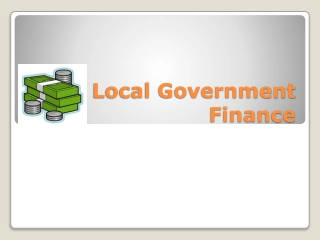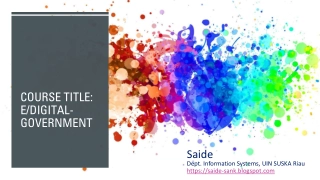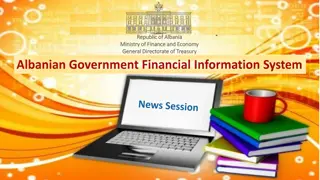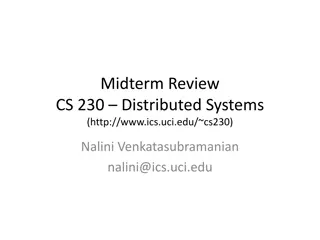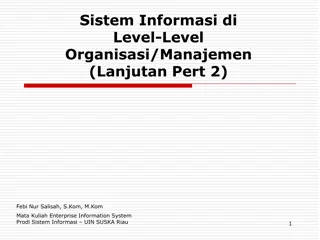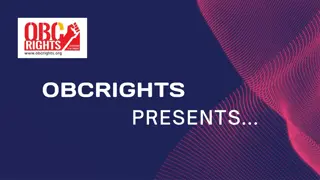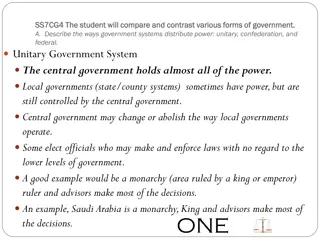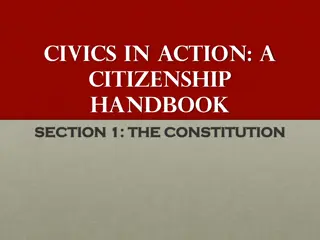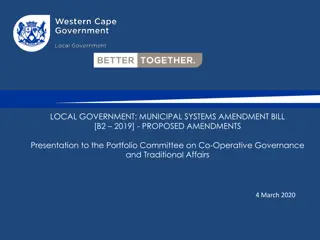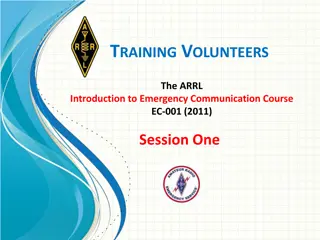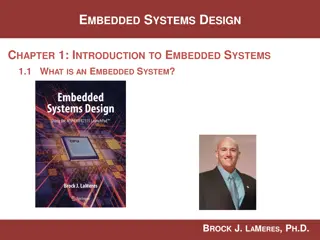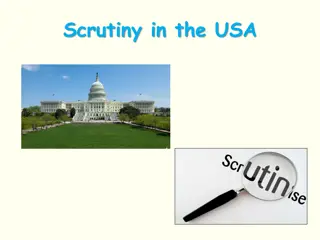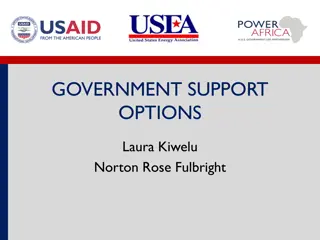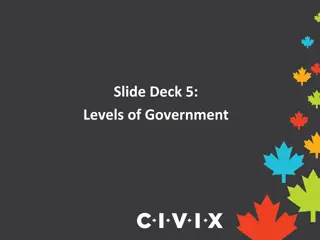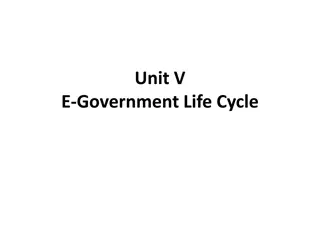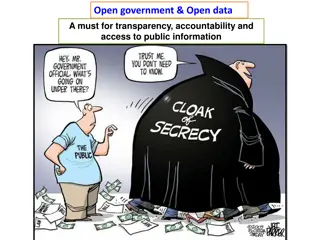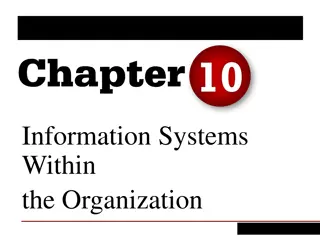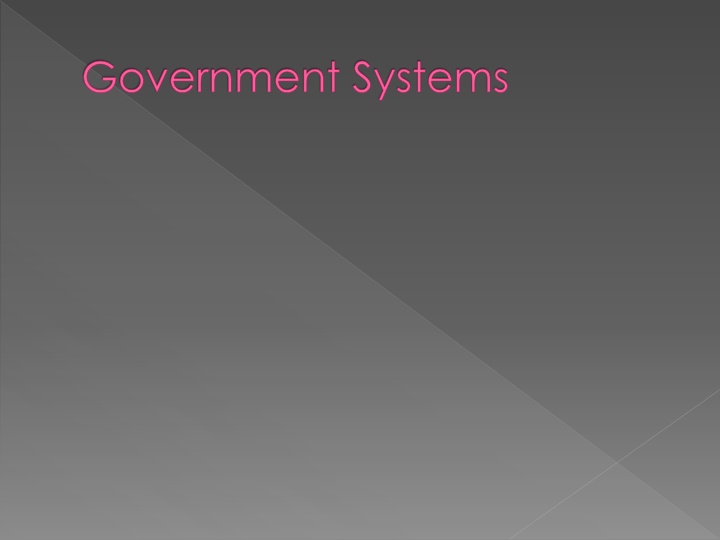
Government Systems
Explore the various forms of government systems, from unitary to federal, and understand how power is distributed and citizen participation is determined. Learn about democratic governments, parliamentary vs. presidential systems, and the interaction between central, state, and people's governments in a governmental system.
Download Presentation

Please find below an Image/Link to download the presentation.
The content on the website is provided AS IS for your information and personal use only. It may not be sold, licensed, or shared on other websites without obtaining consent from the author. If you encounter any issues during the download, it is possible that the publisher has removed the file from their server.
You are allowed to download the files provided on this website for personal or commercial use, subject to the condition that they are used lawfully. All files are the property of their respective owners.
The content on the website is provided AS IS for your information and personal use only. It may not be sold, licensed, or shared on other websites without obtaining consent from the author.
E N D
Presentation Transcript
SS6CG1 The student will compare and contrast various forms of government. a. Describe the ways government systems distribute power: unitary, confederation, and federal. b. Explain how governments determine citizen participation: autocratic, oligarchic, and democratic. c. Describe the two predominate forms of democratic governments: parliamentary and presidential.
Governmental System, not type of government = How is the power moved? = The Central Government (The Big Government ) = The State s or Province s Government (The Little Government) = The People that s us. Understanding a governmental system means understanding how these groups interact
There are 3 basic governmental system models to choose from: Unitary, Confederate or Federal UNITARY GOVERNMENTAL SYSTEM Benefits: Government policies are enacted quickly. In a Unitary System, power flows from the Top down . The people have little or no say in how their government operates. Ex: dictatorships and absolute monarchies Downside: Little to no way for the people to have much say so in government
A CONFEDERATE SYSTEM OF GOVERNMENT In a Confederate System, the States or Provinces can tell the Central Gov t what to do. Downside: It can take a long time to get all of the states to agree on legislation. Gov t. is forced to wait on agreements. Benefits: Each state has an equal say in how the National Gov t. is run.
FEDERAL SYSTEM OF GOVERNMENT Federal System: Much more interaction between the Central Gov t. and the States or Provinces. Power is shared.
b. .determine citizen participation: autocratic, oligarchic, and democratic, etc Democracy - a form of government in which governmental power is retained by the people. (is usually exercised indirectly through a system of representation and regulated by elections) Oligarchy - a government in which control is exercised by a small group of individuals whose authority generally is based on wealth or power. (ex: Large landowners of European descent in Central and South America) Theocracy - a form of government in which a religious figure or belief is recognized as the supreme ruler, but the everyday laws are interpreted by religious leaders; a government subject to religious authority. Autocracy - A system of government in which supreme political power is held by one person. BIG QUESTION TO ASK: How much say so would the people have under each of these forms of government?
c. .the two predominate forms of democratic governments: parliamentary and presidential Sounds complicated, but it s not . Parliamentary government The executive branch of government is nominated to their position by parliament, and are directly responsible to it; this type of government can be dissolved at will by the parliament Presidential - a system of government where the executive branch exists separately from a legislature and is generally elected by the people themselves. Ex: In Canada, the Prime Minister gets his job from the members of Parliament. They can boot him out, if they aren t happy with his performance at any time. Therefore he has to keep the members of Parliament happy most of the time in order to keep his job. Ex: In the US, the President is elected directly by the people. He (or she) doesn t have to worry about making congressmen and senators happy all the time. His position is stable for 4 years (until the next election). It is not a popularity contest with the legislative branch of government. http://t3.gstatic.com/images?q=tbn:YpIXRXyy1ofe4M:http://www.corante.com/importance/archives/Flag_of_the_United_States.png

